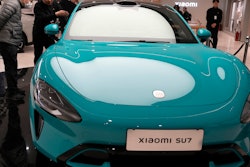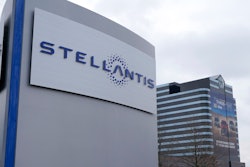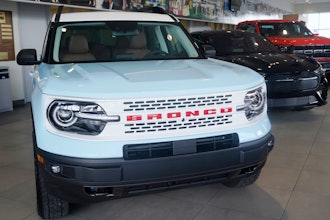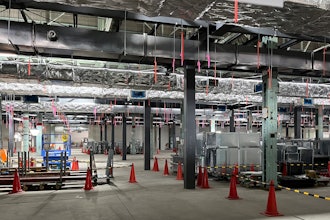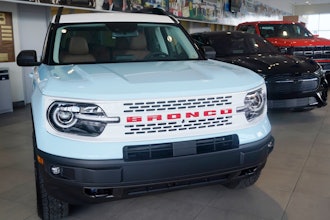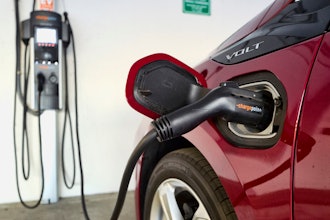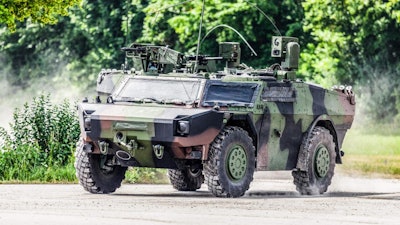
Miniaturization is a critically important driver of technological innovation. Moore’s Law and the extraordinary scaling of semiconductor chips epitomizes the drive towards smaller, lighter, faster, cheaper components that require less power to perform the same tasks.
The trend towards reducing size, weight and power consumption while gaining performance also drives the evolution of many mechanical and optical systems and these factors are especially important in designing systems for armored vehicles.
Stabilization of Electro-Optical Sensors
An innovative concept in stabilization technology for electro-optical sensor systems is achieving these benefits with a design that is significantly more compact and consumes less power than concurrent designs.
Armored vehicles utilize (un)stabilized electro-optical sensor systems for aiming and targeting, surveillance, situational awareness and for observation purposes.
When driving through rough terrain, the electro-optical sighting systems have to be stabilized in order to maintain a stable line of sight and keep track of the target. The traditional design has been to place these sighting systems on motorized stabilization platforms.
The system sometimes contains its own gyroscope, or alternatively, it can receive signals from the turret’s gyroscope.
Software determines the degree of positioning correction required and controls motors to exert equal and opposite force to the impact of the environment in order to maintain alignment with the object insight.
Minimizing Weight and Power Consumption
The challenge is that the motors inside the platform need to be powerful enough to offset the effects of terrain pitch, roll and yaw of vehicle movement for the full mass of the electro-optical sensor system.
In a typical arrangement where multiple sensor systems are used, the total mass adds up and the stabilization motors need to be large and powerful to do the job.
Although the weight of this platform contributes only a small proportion to the overall weight of the armored vehicle, it is an important consideration in the design of electro-optical sensor systems.
Any opportunity to reduce vehicle weight reduces fuel use and associated logistics and has important advantages in transport and mobility on the battlefield.
Moreover, the sighting systems are often attached to a tank turret or a Remote Controlled Weapon Station and the added weight increases the load when the turret rotates.
The power requirements of the motors inside the platform are also an issue.
Two decades ago, a standard combat vehicle required only a 150 amp alternator to power its onboard systems. The introduction of all kinds of sophisticated electronics has increased the amperage requirements more than tenfold.
Minimizing energy consumption of all components is an important priority to decrease fuel consumption and reduce the weight of needed power generation capability.
Smaller and Lighter Design
The inefficiencies of the traditional approach is being replaced by a fundamentally new design of stabilization technology. Rather than employ motors to stabilize the entire electro-optical sensor suite the innovation stabilizes only the Line of Sight (LoS) of these sensors.
Only very small motors are required to operate the moveable optical mirrors positioned in front of the sensors. The line of sight is stabilized by using two moving elements one for azimuth and one for elevation.
An essential aspect of this new stabilization concept is the ability to stabilize the line of sight of all sensors in a multiple electro-optical sensor system. The line of sight of all electro-optical sensors are merged together by optical components to create one line of sight.
The modular nature of this new design concept affords many benefits in addition to the dramatically reduced size, weight and power requirements. The stabilization system can support sensor systems of any size and weight without the need to increase the load capacity of the motors.
Faster Speed Provides Improved Stabilization
And the new design is not only smaller and lighter, it is faster too. Because less force is required to move the mirrors than the traditional approach of moving the entire sensor system, the stabilization system is more responsive and therefore more effective in providing stability.
This new stabilization technology was initially developed by Nedinsco for a Missile Guidance Unit containing a daysight camera and laser guidance system.
The MGU is used on a wheeled armored vehicle and controls the missile during its flight. This new stabilization technology was developed to meet the stringent requirements of accuracy, dimensions and weight of this Missile Guidance System.
The flexible, modular design has made this stabilization system suitable for any sensor system incorporating multiple electro-optical sensors.
Advantages of the New Design Concept
This new concept makes it possible to design a more compact SwaP optimized stabilization solution in situations with constraints typical of armored vehicles—limited available space and limited available power.
- Size: The space savings are significant and critically important in cramped armored vehicles. The compact size affords more options for optimal placement on the exterior.
- Weight: Because the motors are only moving mirrors and not the entire electro-optical sensor system, the motors are smaller. The entire system, including its enclosure, is smaller, resulting in weight reduction of up to 50%.
- Power usage: Smaller motors draw significantly less electrical power.
- Stabilization performance: The system is faster and more responsive because only the mirrors need to be moved. As a result, much higher stabilization accuracy and dynamic performance is achieved.
- Modularity, Flexibility and Cost: The mirrors, electronics and stabilization software are modular, making the system flexible and adaptable for future requirements. New electro-optical sensors of any type and size can be easily incorporated to utilize the merged line of sight. Therefore development costs and hardware costs are significantly reduced.
Less is More
This innovative new design concept provides a significantly more effective and efficient stabilization method for multiple electro-optical sensor systems. By rethinking the basic architecture, the new design reduces negative attributes of size, weight and power consumption while enhancing stabilization performance through improved speed, responsiveness and accuracy.
---
Sjaak Baetsen is a project manager at Nedinsco.






